Indian cities have a new pollution problem this extremely hot summer. The giant garbage dumps the size of multiple football fields from Delhi to Chennai are beginning to burn.
The massive fire at New Delhi’s Bhalswa garbage dumpsite site has grabbed national and international headlines. Fires are raging for the third straight day on Thursday and officials said that it would take at least another day to put them out. The Delhi government even imposed a paltry fine of ₹50 lakh on the North Municipal Corporation of Delhi for its negligence.
The fire broke out on Tuesday and several reports detailed the smoke from the fire turning the sky hazy grey. The cause of the fire is yet to be ascertained.
This is the fourth major garbage dumpsite fire in Delhi in the last month, with the Ghazipur landfill alone reporting three. Not just in Delhi, such incidents are being reported from several parts of India, including in the Chennai Perungudi dumpsite, not far from the city’s IT corridor.
What caused the fire?
The waste that is dumped in landfills is of two types — organic (kitchen waste and green waste such as flowers, vegetables, fruits and leaves) and inorganic (recyclable waste such as glasses and paper; inert waste such as construction debris, and hazardous and toxic waste like e-waste, and fluorescent tube lights).
About 70-75 per cent of all waste is organic and can be converted to manure or biogas. “Unfortunately, we have a weak management mechanism. That is where the problem is,” said TV Ramachandra, Professor at the Centre for Ecological Sciences, Indian Institute of Science (IISc), Bangalore, adding, “When we dump too much organic material in the landfills, methane will get generated.”

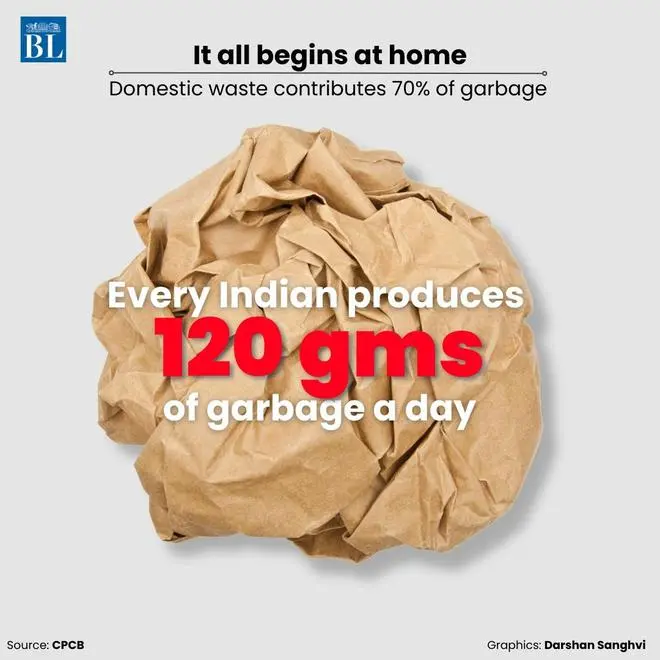
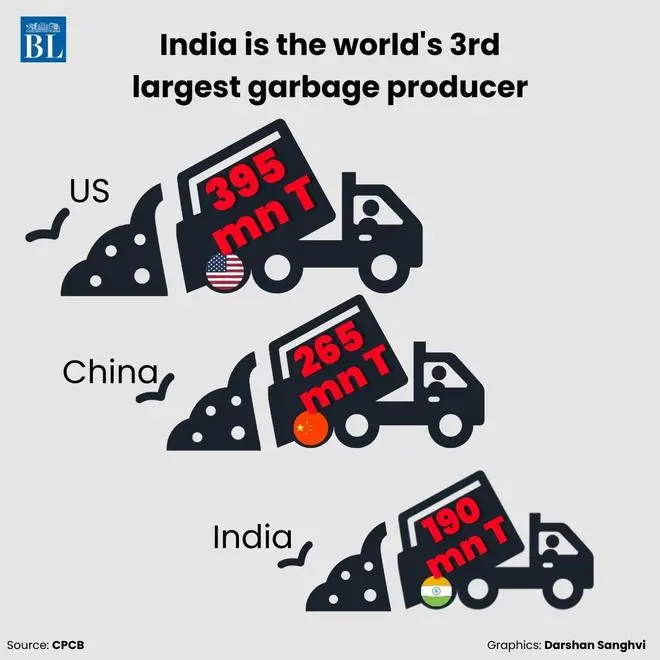

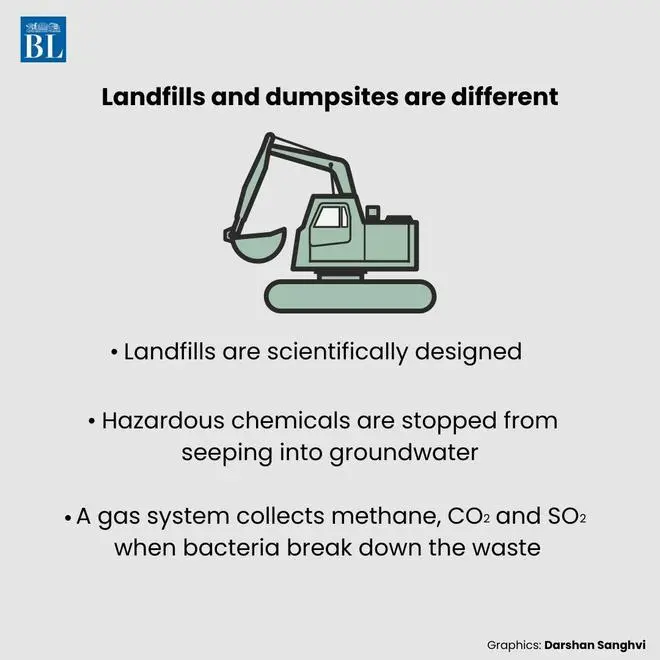
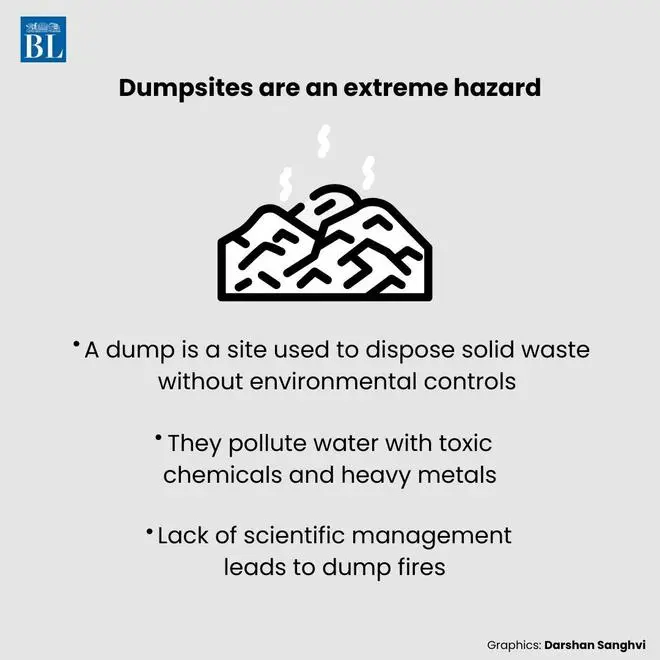

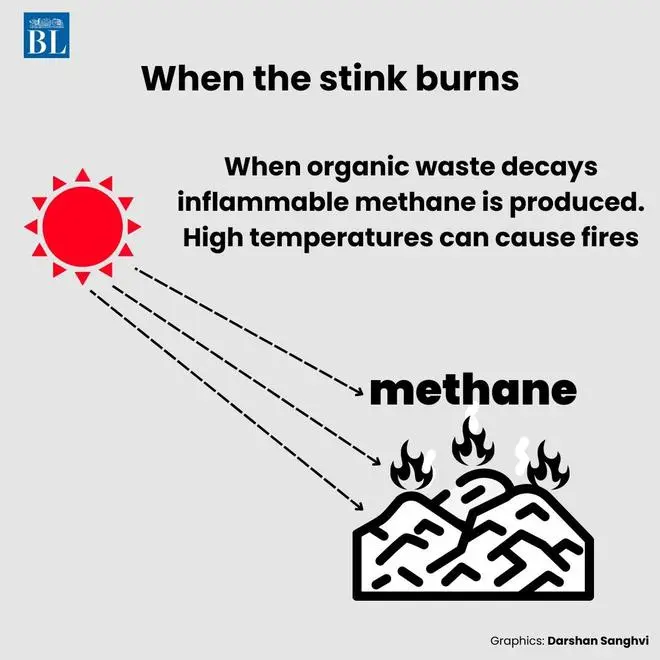

“Methene is produced due to high temperature and pressure. It is inflammable. This along with combustible material such as plastic can lead to fires,” he said.
A 2021 report by the United Nations Environment Programme shows that most human-caused methane emissions come from just three sectors — fossil fuels, waste, and agriculture. It goes on to say that landfills and wastewater make up about 20 per cent of emissions. “If you take out the organic waste, you are will be solving the problem,” Ramachandra said.
When waste burns, harmful gases are emitted. “If you burn plastics, paper and wood, there will be many dioxins, which can be highly toxic and can cause several serious health issues, including cancer. Heavy metals and nitrates can seep into the water and cause kidney failures,” Ramachandra explained.
The solutions
The best way to deal with waste is to segregate it at the source itself — that is in our homes. “Incentivise segregating at the source. Give the people who segregate at home some monetary benefits because they are lowering the burden. Penalise those who don’t. If this is done, management becomes easier and people will also take part in it,” Ramachandra explains.
Decentralised and scientific waste management is needed to ensure that landfills do not grow in size. “There is no point in taking the wastes 30-40 km and sending them to a landfill, (if we do that) then it is just a dumping site,” Ramachandra observed. Sanitary landfills — where there is no seepage of wastes into the land or water — are the need of the hour. However, even in these landfills, management is a problem, he said.
The effective solution could lie in setting up an independent authority to oversee waste management in the country. The Solid Waste Management Rules, 2016 detail how waste should be handled, but these rules are rarely followed. “Implement the rules in the true spirit, that will solve the problem,” he said.














Comments
Comments have to be in English, and in full sentences. They cannot be abusive or personal. Please abide by our community guidelines for posting your comments.
We have migrated to a new commenting platform. If you are already a registered user of TheHindu Businessline and logged in, you may continue to engage with our articles. If you do not have an account please register and login to post comments. Users can access their older comments by logging into their accounts on Vuukle.